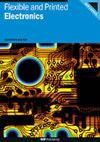纤维素基材丝网印刷银的量化方法研究:印刷电子产品的回收利用
IF 3.2
4区 工程技术
Q3 MATERIALS SCIENCE, MULTIDISCIPLINARY
引用次数: 0
摘要
电子技术的持续进步导致不可持续地消费以塑料为基础的产品,其中大多数含有自然有限的金属资源。用更可持续的材料(如纤维素基质)替代这些塑料材料,是该行业为减少其对环境的影响而采取的众多措施之一。在这项工作中,由于文献信息的缺乏,提出了一种快速准确的方法来测量沉积在纸基基材上的金属量。这种方法的发展将有助于建立一种程序来确定在寿命结束的印刷电子产品中存在的金属数量。本工作调查和比较了四种不同的方法。图像处理和几何分析结果显示印刷银存在高估和不精确的问题。第三种基于重力测量的方法比以前的方法更精确。最后一种方法基于酸浸的印刷电子灰烬结果是更精确,可靠和简单的方法,克服了与印刷图案几何形状和生产过程中使用的材料相关的挑战。这些结果将为定量方法的发展提供关键信息,以确定在纸质电子产品中使用的银的百分比,这种方法可以很容易地被工业界采用。此外,考虑到银是要分离的主要成分之一,并进一步进行估价,这种方法是在达到其使用寿命结束后专门用于此类电子产品的回收过程的先决条件。本文章由计算机程序翻译,如有差异,请以英文原文为准。
Investigation of methods to quantify silver screen-printed onto cellulosic substrate: towards recycling of printed electronics
The continued progress in electronics technology has led to unsustainable consumption of plastic-based products containing, in their majority, natural finite metallic resources. The substitution of these plastic materials by more sustainable ones, such as cellulosic substrates, is one of many measures applied by the industry to reduce their environmental impact. In this work, due to the lack of information in the literature, a fast and accurate method to measure the amount of metal deposited onto a paper-based substrate is proposed. The development of this method will contribute to the creation of a procedure for determining the quantity of metal present in end-of-life printed electronics. The present work investigates and compares four different methodologies. Image processing and geometrical analyses presented overestimated and non-precise results for printed Ag. A third method based on gravimetric measurements presented to be more accurate compared with the previous methods. The last method based on acid leaching of the printed electronic ashes outcome to be the more precise, reliable and simpler method, and overcomes challenges associated to the printed pattern geometry and the materials used during its production. These results will provide key information for the development of a quantitative methodology to determine the percentage of Ag used in paper-based electronics that can be adapted easily by the industry. Furthermore, this method is a prerequisite for recycling processes devoted to this type of electronics after reaching their end-of-life, considering Ag as one of the major components to be separated and, further, valorized.
求助全文
通过发布文献求助,成功后即可免费获取论文全文。
去求助
来源期刊

Flexible and Printed Electronics
MATERIALS SCIENCE, MULTIDISCIPLINARY-
CiteScore
4.80
自引率
9.70%
发文量
101
期刊介绍:
Flexible and Printed Electronics is a multidisciplinary journal publishing cutting edge research articles on electronics that can be either flexible, plastic, stretchable, conformable or printed. Research related to electronic materials, manufacturing techniques, components or systems which meets any one (or more) of the above criteria is suitable for publication in the journal. Subjects included in the journal range from flexible materials and printing techniques, design or modelling of electrical systems and components, advanced fabrication methods and bioelectronics, to the properties of devices and end user applications.
 求助内容:
求助内容: 应助结果提醒方式:
应助结果提醒方式:


